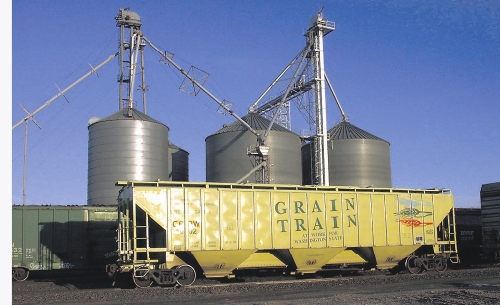forum
library
tutorial
contact

USDA: Northwest Wheat Stocks Down 43%,
Winter Wheat Planting Up 3%
by Matthew Weaver
Capital Press, January 14, 2022
|
the film forum library tutorial contact |

|
USDA: Northwest Wheat Stocks Down 43%,
by Matthew Weaver
|
 Pacific Northwest wheat stocks are down about 43% compared to the same time last year, according to the USDA. Regional wheat industry representatives say that's to be expected.
Pacific Northwest wheat stocks are down about 43% compared to the same time last year, according to the USDA. Regional wheat industry representatives say that's to be expected.
"The overall decline of 43% is about on par with the fact that we had a 47% drop in production," said Glen Squires, CEO of the Washington Grain Commission. "There is just less wheat out there to start with so the decline in stocks is not unexpected."
According to the USDA, Washington wheat stocks totaled 82.6 million bushels, down from 147 million bushels the previous year, nearly a 44% decline.
Idaho wheat stocks totaled 48.8 million bushels, down from 84.7 million bushels the year before, a 42% decline.
Oregon wheat stocks totaled 21.1 million bushels, down from 38.2 million bushels the previous year, nearly a 45% decline.
"We did not come into the year with a lot in the bins carried over," said Amanda Hoey, CEO of Oregon Wheat. "The 2021 crop suffered due to combined drought and heat. With the lowered production levels last year, the reduced stocks on and off farm are to be expected."
Nationally, wheat stored in all positions totaled 1.39 billion bushels, down from 1.70 billion bushels a year ago, an 18% decline.
Washington winter wheat growers seeded an estimated 1.80 million acres of winter wheat for harvest in 2022, up 3% from 1.75 million acres seeded in 2021 but the same as 2020.
"The increase in Washington winter wheat acreage is not a big surprise given much higher prices," Squires said.
Soft white wheat this week ranged from $10.20 to $11.25 per bushel on the Portland market.
USDA's National Agricultural Statistics Service occasionally adjusts seeded acreage numbers later in the year, Squires noted.
"For spring wheat, we will have to wait and see," he said. "There are quite a few variables ... rotations, other crops and their prices and the wheat price itself. Certainly we are hoping that moisture continues to come."
Idaho growers seeded 760,000 acres of winter wheat for the 2022 crop, up 7% from 710,000 acres in 2021, and 6% above 720,000 acres in 2020 crop.
Oregon farmers planted 730,000 acres, up 1% from 720,000 acres in 2021 but down 1% from 740,000 acres in 2020.
Based on seed sales, Hoey expected to see planted acreage increase in Oregon this year, but anticipated acres closer to the 740,000 acre range, not lower than 2020.
"The increase in planted acreage over last year was expected, in part due to response to price but also largely in response to the concerns stemming from extreme drought conditions last year," Hoey said. "For irrigated areas, wheat is a low water intensity crop option, so (it is) a good alternative for a rotation year in which producers may be concerned about the impacts from the drought to water supply."
Hoey also pointed to an increase in grass seed prices, which likely kept fields in high-value grass seed production.
Nationally, wheat farmers seeded nearly 34.4 million acres, up 2.23% from 33.6 million acres in 2021, and up nearly 13% from nearly 30.5 million acres in 2020.
learn more on topics covered in the film
see the video
read the script
learn the songs
discussion forum
